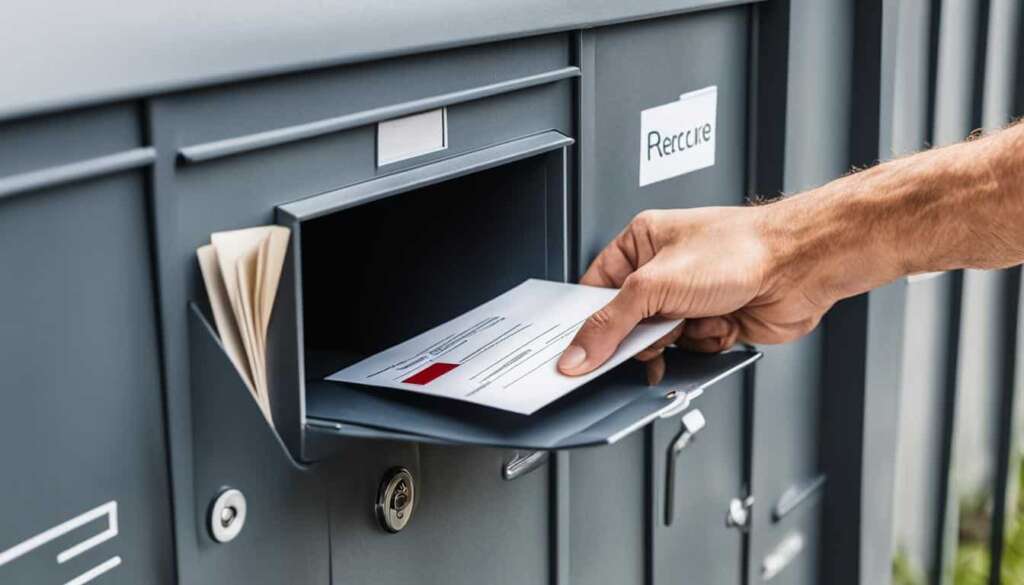Table of Contents
POP3, or Post Office Protocol version 3, is an essential email protocol that allows users to retrieve their emails from an email server. It is one of the most commonly used email protocols, along with SMTP and IMAP. POP3 operates by downloading emails from the server to the user’s local computer or device. This protocol is responsible for executing the download and delete operations for messages, ensuring that users can access their emails even in offline mode. POP3 is a vital component in digital communication, enabling the efficient retrieval of emails for both personal and business purposes.
When it comes to digital communication, email plays a significant role. Whether it’s staying in touch with loved ones or conducting business transactions, emails provide a convenient and reliable means of communication. However, to access these emails, we rely on email protocols like POP3.
So, what is POP3 exactly? POP3, short for Post Office Protocol version 3, is an essential email protocol that allows users to retrieve their emails from an email server. It acts as the bridge between the email server and the user’s local computer or device, enabling the efficient download and access of emails. Together with SMTP and IMAP, POP3 forms the backbone of email communication.
The Role of POP3 in Email Communication
POP3, or Post Office Protocol version 3, plays a crucial role in email communication by providing users with the ability to retrieve and manage their emails from an email server. With POP3, users can easily access their inbox stored on the server and download all the messages to their local device, ensuring seamless email retrieval.
One of the key advantages of POP3 is its offline access capability. Once the messages are downloaded to the user’s device, they can be accessed without an active internet connection. This is especially beneficial for users who travel frequently or find themselves in areas with limited connectivity.
In addition to providing offline access, POP3 also offers efficient inbox management. Users have the option to delete messages from the server once they are downloaded. This not only frees up space on the server but also helps in organizing and decluttering the inbox. By removing unnecessary messages from the server, users can ensure better email management and improve overall email efficiency.
Moreover, modern POP3 clients provide users with the flexibility to access their emails from multiple devices. These clients can be configured to keep a copy of the messages on the server, allowing users to access their emails from different devices without the fear of missing any important communication.
POP3 allows users to retrieve emails, manage their inbox, enjoy offline access, download messages, and selectively delete messages from the server, resulting in efficient and convenient email communication.
Example Use Case:
Sarah is a freelance writer who often works in locations with unstable internet connections. She heavily relies on POP3 for email retrieval and management. With POP3, she can download her emails to her laptop and work on them even without an internet connection. This ensures that Sarah never misses any important assignments or communication from clients, allowing her to stay productive on the go.
POP3 Email Retrieval Process:
| Step | Description |
|---|---|
| 1 | User initiates email retrieval by connecting to the POP3 server. |
| 2 | The POP3 server requires the user to provide their login credentials (username and password) to authenticate their identity. |
| 3 | Once authenticated, the POP3 server grants access to the user’s inbox stored on the server. |
| 4 | The user downloads all the messages from the server to their local device. |
| 5 | After downloading, the user has the option to delete the messages from the server to free up server space and improve email management. |
In conclusion, POP3 plays a crucial role in email communication by providing users with efficient email retrieval, inbox management, offline access, message download, and message deletion. Whether you are a frequent traveler, remote worker, or simply looking for a reliable email protocol, POP3 offers the necessary features to enhance your email experience.
Comparing POP3 with Other Email Protocols
While POP3 is a popular email protocol, it is important to compare it with other common email protocols like SMTP and IMAP to understand its unique characteristics.
SMTP: Simple Mail Transfer Protocol
SMTP is responsible for sending email messages, allowing users to send emails from their email clients to email servers. It ensures the smooth transmission of emails across different networks and servers. SMTP is a fundamental component of email communication, enabling users to deliver messages to recipients worldwide.
IMAP: Internet Message Access Protocol
IMAP focuses on email retrieval, providing users with the ability to access and manage their emails directly on the email server. Unlike POP3, which downloads emails to the local device, IMAP allows for synchronization of emails across multiple devices. This means that changes made to an email on one device, such as deleting or marking it as read, are reflected on all other devices connected to the email account.
“IMAP allows for synchronization of emails across multiple devices, ensuring that changes made to an email on one device are reflected on all other devices.”
This feature makes IMAP an excellent choice for users who access their emails from different locations or devices. It provides a consistent email experience, ensuring that emails are up to date and accessible regardless of the device used.
In contrast, POP3 downloads emails from the server to the local device, allowing users to access their emails even in offline mode. While POP3 offers offline access, it does not provide the same level of synchronization as IMAP. Changes made to emails, such as deletions or read status updates, are not reflected across multiple devices.
Here’s a table summarizing the main differences between POP3, SMTP, and IMAP:
| Email Protocol | Email Sending | Email Retrieval | Synchronization across Multiple Devices |
|---|---|---|---|
| POP3 | Yes | Yes | No |
| SMTP | Yes | No | No |
| IMAP | No | Yes | Yes |

Understanding the differences between these email protocols can help you determine which one is most suitable for your specific needs. Whether you prioritize offline access, synchronization across multiple devices, or efficient email sending, choosing the right protocol ensures a seamless and efficient email experience.
Choosing the Right Email Protocol for Your Needs
When it comes to choosing the right email protocol for your needs, it is essential to consider factors such as how you access your emails and the level of synchronization required. Different email protocols, such as SMTP, POP3, and IMAP, offer distinct functionalities that cater to specific requirements.
If you primarily use one device to access your emails and prefer offline access, POP3 may be the ideal choice. POP3 allows you to download emails from the email server directly to your local device, ensuring that you can access your messages even without an internet connection. This protocol is convenient for individuals who are frequently on the go or have limited internet access.
On the other hand, if you use multiple devices or require real-time synchronization of emails across devices, IMAP would be a better option. IMAP offers the ability to access and manage emails directly on the email server, ensuring that any changes made to an email on one device are reflected on all other devices. This allows for seamless email management and ensures that you have access to your most up-to-date messages regardless of the device you are using.
Lastly, SMTP is a necessary protocol for sending emails from your email client to email servers. This protocol is responsible for the transmission of messages, ensuring that your emails reach their intended recipients. SMTP is an essential component of email communication and works seamlessly in conjunction with POP3 and IMAP for a complete email experience.
FAQ
What is POP3 and why is it important?
POP3, or Post Office Protocol version 3, is an essential email protocol that allows users to retrieve their emails from an email server. It is important because it enables efficient retrieval of emails for both personal and business purposes.
How does POP3 work in email communication?
POP3 operates by downloading emails from the server to the user’s local computer or device. It executes the download and delete operations for messages, ensuring users can access their emails even in offline mode.
What role does POP3 play in managing email inboxes?
POP3 allows users to access their inbox stored on the server and download all the messages to their local device. It also offers the option to delete messages from the server once they are downloaded, improving email management.
How does POP3 compare to other email protocols like SMTP and IMAP?
SMTP is responsible for sending email messages, while IMAP focuses on email retrieval and synchronization across multiple devices. POP3 downloads emails to the local device, whereas IMAP allows for real-time synchronization of emails.
How do I choose the right email protocol for my needs?
Consider factors such as how you access your emails and the level of synchronization required. If you prefer offline access and primarily use one device, POP3 may be ideal. If you require real-time synchronization across devices, IMAP would be a better option. SMTP is necessary for sending emails.













